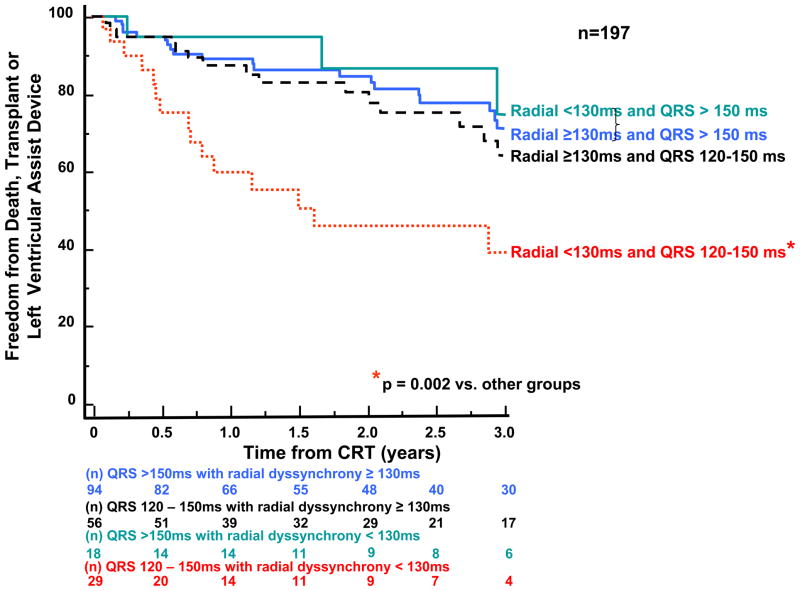Figure 8.
Kaplan-Meier curves of patients subdivided by baseline QRS duration and dyssynchrony by the speckle tracking radial strain showing probability of freedom from death, transplant, or ventricular assist device after cardiac resynchronization therapy (CRT). Patients with QRS duration 120–150 ms who lacked dyssynchrony by speckle tracking radial strain had a significantly less favorable outcome following CRT than the other patient subgroups.

